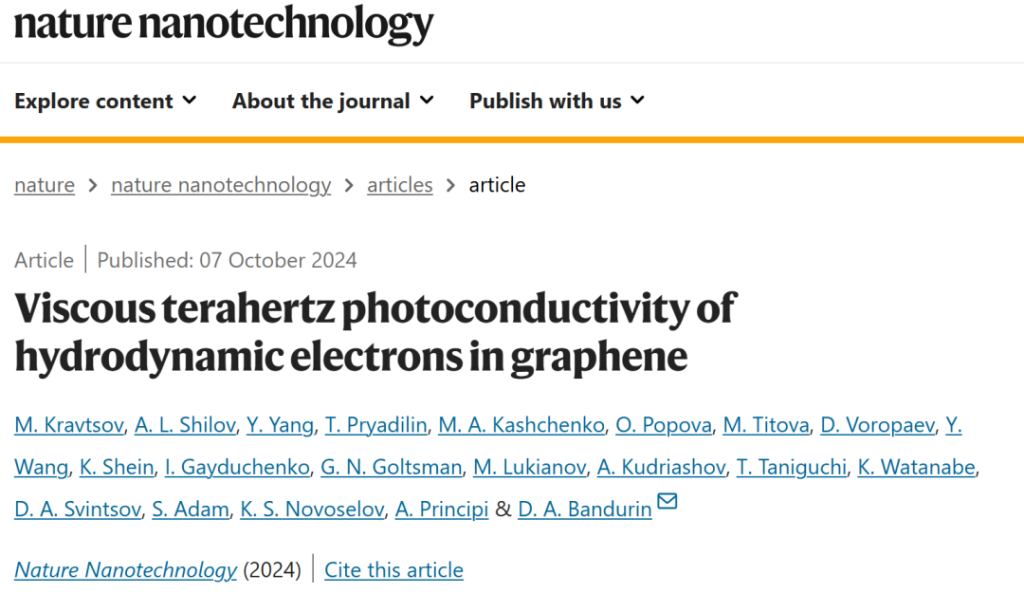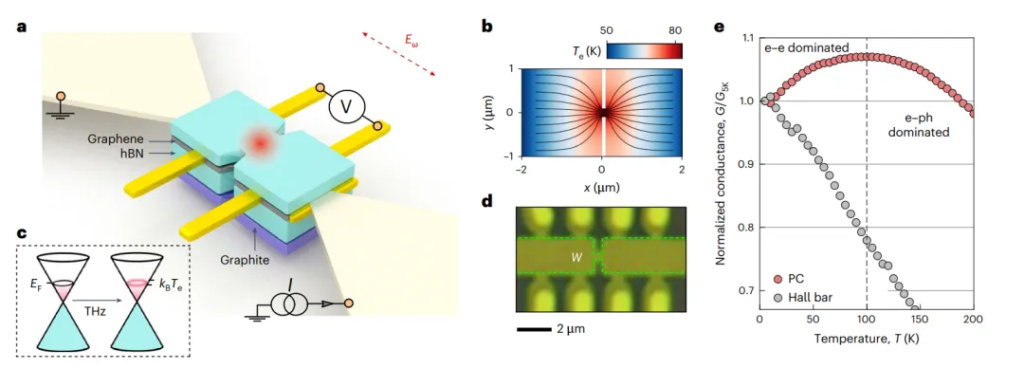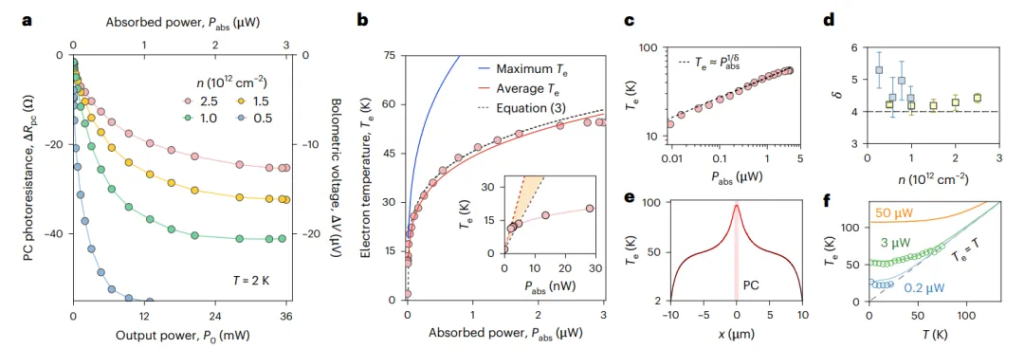Graphene-Terahertz | Nature Nanotechnology
Photoresistance and Graphene’s Unique Behavior
When light irradiates a material, it can alter its conductivity, a phenomenon known as photoresistance. In semiconductors, photoresistance is negative because light promotes electrons across the bandgap, increasing the number of charge carriers involved in transport. In contrast, superconductors and normal metals exhibit positive photoresistance due to the disruption of the superconducting state and enhanced momentum-relaxation scattering.

Breakthrough Study on Terahertz Radiation in Graphene
In a new publication in Nature Nanotechnology, researchers from the National University of Singapore—M. Kravtsov, A.L. Shilov, D.A. Bandurin, and others—reported a qualitative deviation from standard metallic graphene behavior. The study found that Dirac electrons in graphene, when exposed to continuous terahertz (THz) radiation, can thermally decouple from the lattice, triggering hydrodynamic electron transport.
- Superballistic Flow: Under terahertz excitation, graphene exhibits a superballistic electron flow, leading to a decrease in the contracted resistance of the material.
- Negative Photoresistance: The team analyzed the relationship between negative photoresistance, carrier density, and radiation power, demonstrating that these superballistic devices could function as sensitive phonon-cooled bolometers with picosecond-level response times.
This discovery highlights the practical utility of hydrodynamic electron behavior in designing ultrafast terahertz sensors and electronic thermometers.
Viscous Terahertz Photoconductivity in Graphene
The research provides new insights into the viscous terahertz photoconductivity of hydrodynamic electrons within graphene.
Figures Overview

- Figure 1: Superballistic Electron Flow

- Figure 2: THz-Driven Hydrodynamic Flow and Negative Photoresistance

- Figure 3: Power Dependence and Superballistic Electron Thermometry
Reference
Kravtsov, M., Shilov, A.L., Yang, Y., et al. “Viscous Terahertz Photoconductivity of Hydrodynamic Electrons in Graphene.” Nature Nanotechnology (2024).
https://doi.org/10.1038/s41565-024-01795-y
This translation is adapted from an original article in Nature Nanotechnology.

